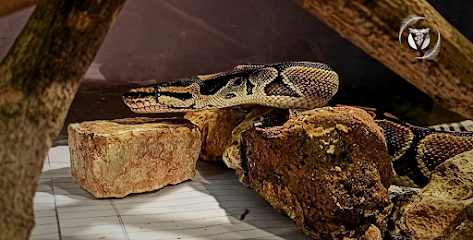The Herp Index: Unveiling the Secrets of Reptile Behavior
Reptiles are often misunderstood. Cold-blooded, slow-moving, and mysterious, they don’t wear their emotions on their sleeves (or scales) like mammals do. But make no mistake—these creatures have a rich behavioural repertoire. If you’ve ever watched a bearded dragon bob its head, a snake flick its tongue, or a turtle bask under a lamp, you’ve witnessed a complex language of instinct and adaptation.
In this edition of The Herp Index, we dive into the fascinating
world of reptile behaviour—decoding the why behind the wiggle, the stillness,
and the sideways glances of our scaly friends.
1. Tongue Flicking: The Snake's Super Sensor
If you've ever held a snake, you’ve likely seen it flick its tongue
rapidly in and out. This isn’t a sign of aggression—quite the opposite. Snakes
use their tongues to “taste” chemical particles in the air and transfer them to
Jacobson's organ (or vomeronasal organ) in the roof of the mouth.
Why it matters:
- Frequent tongue flicking
means the snake is curious or exploring. Some snakes tongue-flick more
often when introduced to a new enclosure—it's their way of “reading the
room.”
- A sudden stop in flicking,
especially if accompanied by a tight, tense posture, may signal that it's
on high alert.
2. Basking: More Than Just Soaking Up Sun
Unlike mammals, reptiles are ectothermic—they rely on external heat to
regulate body temperature. Basking isn't just about warming up; it’s an
essential behaviour for digestion, immunity, and metabolic function.
Look for this:
- A healthy lizard or turtle
will bask daily under a heat lamp or in a sunny spot.
- If a reptile stops basking
or avoids the warm zone entirely, it may be too hot, the UVB bulb may need to be replaced, or the animal could be sick.
3. Head Bobbing, Arm Waving, and Body Posturing
Reptiles do communicate—just not in the way most mammals do.
Bearded
dragons are famous for their head bobbing (dominance), arm waving
(submission), and black-bearding (stress or aggression). Anoles change
colour with mood and temperature. The Indian Chameleon turns a deep black-brown
colour when it feels threatened. Even snakes use body language—tight coils can
signal stress, while a relaxed posture often indicates comfort.
 |
| ~ The appearance of black polka dots was an immediate signal of Charlie's annoyance ~ |
These cues are subtle, but they speak volumes.
4. Burrowing and Hiding: A Sign of Stress or Comfort?
Many reptiles burrow or seek shelter. This can either mean they’re
feeling secure—or trying to avoid something.
When it’s normal:
- During shedding, rest, or
brumation (a reptilian form of hibernation).
- In species that naturally
dig or tunnel, like leopard geckos or sand boas.
When to worry:
- If hiding becomes constant and the animal refuses food, it could be environmental stress, illness, or incorrect temperatures.
That's all, folks.
I will be posting more articles covering rehabilitation, enclosures, diet, free flight, and training with species like turtles, snakes, dogs, and more.
- Gmail - namratansahoo@gmail.com
- Instagram - @TheVetDiariesBlog







.jpg)





Loved the article, way to go!!!!
ReplyDeleteThank you so much <3
DeleteWell written, very informative article , helped me learned stuff I didn't know before 👏👏
ReplyDeleteI'm so glad the article was helpful, thank you for your support <3
Delete